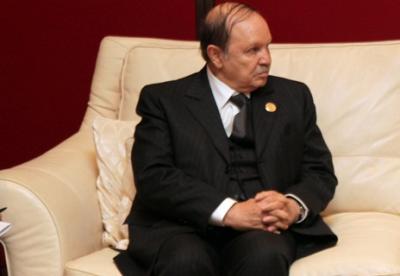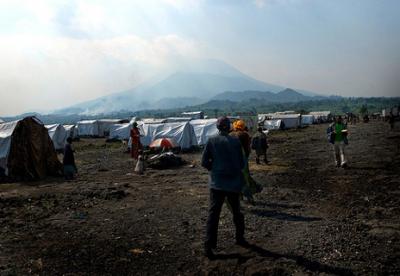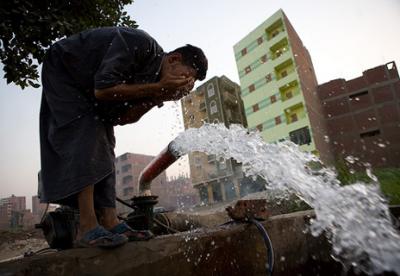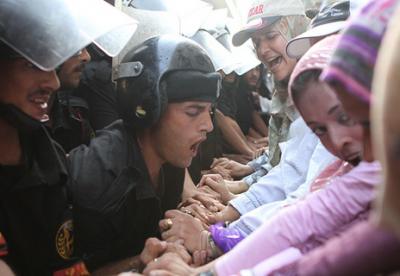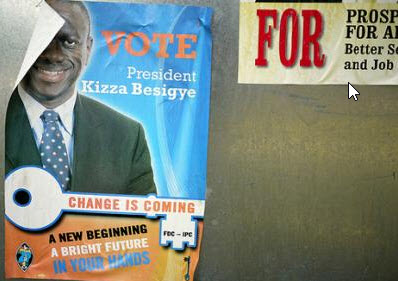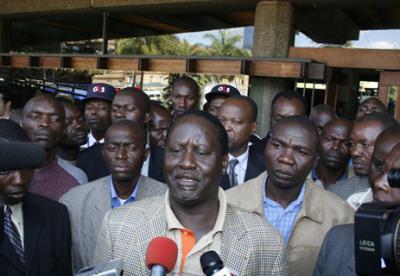Tunisia: Protecting Ben Ali’s Feminist Legacy
State feminism prospered under the authoritarian rule of Bourguiba and Ben Ali. What are the prospects for women’s rights following the 2011 revolution?
By Maaike Voorhoeve
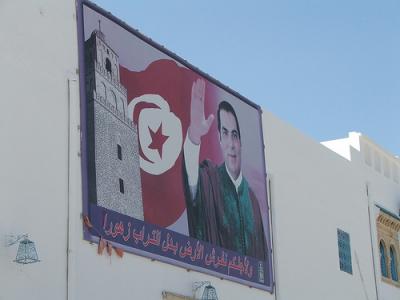
Ever since independence from colonial rule, emancipation and feminist measures have been crucial elements of Tunisian politics. The most famous example of this is the Tunisian Personal Status Code, which regulates issues pertaining to marriage, divorce and inheritance. And unlike reforms in other countries in the region, the code deviates significantly from certain Islamic legal traditions such as polygamy, child marriage, forced marriage and repudiation.
However, debates on what the ‘new’ Tunisia should look like following the revolution of January 14, 2011, have called some of these gains for women’s rights into question. What, then, will be the lasting legacy of these advances that were made under the authoritarian regimes of Habib Bourguiba (1956-1987) and Zine El Abidine Ben Ali (1987-2011) and what are the prospects moving forward?
Le féminisme Bourguibien (1956-1987)
Directly after Tunisia’s independence in 1956, the president of the new Tunisian Republic, Bourguiba, issued a personal status code (PSC). As a result, the influence of Islamic law in this domain was ended or at least curtailed, and a (comparatively) more egalitarian family hierarchy was established in law. This code was then, and still is, famous within the Muslim world and beyond for its abolition (or re-interpretation) of classical Islamic precepts. For example, to this day, Tunisia is the only member of the Arab League that expressly prohibits polygamy and allows equal rights in divorce for men and women.
In the years that followed, other codes were issued that aimed at women’s emancipation. In 1959, Tunisia proclaimed a constitution that protected this equality principle, and measures were taken to enhance female participation in society: women were granted active and passive voting rights (1957), an effective programme of family planning was introduced, and women were granted a right to education (1980). In 1985, Tunisia ratified the Convention on the Elimination of Discrimination against Women (CEDAW), which, on the basis of the constitution, prevails over Tunisian national law. These measures are collectively termed le féminisme Bourguibien.
Ben Ali continues feminist policies (1987-2011)
When Ben Ali came to power in 1987, he continued Bourguiba’s feminist politics, and even enhanced several measures issued by his predecessor.
Within the PSC, even if this code was comparatively women-friendly, it did provide that the wife should obey her husband. Under Ben Ali, this principle was replaced by a more ambiguous phrase, stating that the husband is the ‘head of the family’ (1993). Other changes were more clear cut – the minimum age for marriage, which under Bourguiba was set at 15 years for girls and 17 years for boys, was raised to 18 for boys and girls alike (2007).
Ben Ali equally took a number of measures to improve the situation of divorced women. The first concerned financial maintenance after divorce: although the PSC was the only family code in the region obliging the man to pay maintenance to his ex-wife upon divorce, this was often not enforced in practice. In order to improve this situation, Ben Ali created a state fund to secure maintenance payments to the mother and her children (1993).
The second measure related to the nationality code, which allowed women to pass on their nationality to their children. This was crucial in preventing women who had married a foreigner losing custody upon divorce, on the grounds that the child had a foreign nationality (1993).
The third measure provided that couples could choose to enter into marriage with a joint ownership of all their possessions – something that ran against the prevailing practice where spouses did not share any goods, even if they were acquired during the course of marriage. This shared “community of goods” could prevent women who did not earn a living during their marriage from ending up destitute after divorce (1998). Fourth, a mother who has custody over her children obtained the right to stay in the marital home after divorce (2008), even if it belonged to the father.
Besides the rights within the family, Ben Ali extended women’s civil, political and social rights from education and political participation to participation in the labour market. An article was inserted in the Civil Code providing for equality in chances and treatment in matters of work and profession (1993), and in 2000, the provision that women need their husband’s consent to sign a labour contract was abrogated. Both measures showed an acute understanding that women formed a significant portion of the national work force, and reflected not only increasing rights, but also increasing duties for women.
These ‘feminist’ laws were often applauded by the international community, and positioned Tunisia at the forefront of progressive gender laws in the region. They were, however, generally the fruit of authoritarian rule.
State feminism
These feminist laws and policies were almost exclusively a product of top-down impositions, laws made from above, described by the term ‘state feminism’. Those issued before 1959, such as the PSC, were imposed by President Bourguiba, since the Republic did not yet have a constitution that secured a separation of powers. The laws issued after 1959 were equally authoritarian: despite a formal separation of powers, Tunisia was governed by one ruling party, and the president had virtually unlimited legislative powers.
This context has led Tunisian intellectual Kmar Bendana to characterise the Tunisian feminist politics as ‘paternalistic’, aimed at ‘educating the people’. Bourguiba especially, is often associated with being Tunisia’s ‘father’, who knew what was best for his people.
The term ‘state feminism’ is defined by Tunisian feminist Sana Ben Achour as follows: It designs “the state’s will to accelerate the process of equality between the sexes and is employed … to distinguish between feminism as a social movement, driven by women’s collective claim for equality and social change on the one hand, and feminism as a doctrine and politics from the state”. The concept of state feminism appears contradictory, in that it designates the enhancement of rights and freedoms for a group of people, while being authoritarian at the same time. Where exactly did this concern for feminism come from?
In the first years after independence, Bourguiba’s politics were entirely directed towards reform on various levels, including the economic, religious and social level. His aim was turn Tunisia into an ‘advanced’ society and show that they were deserving of sovereignty. The emancipation of the woman became one of the fulcrums of Tunisia’s modernist politics. Under Ben Ali, state feminism served a different goal: in a context of violations of civil and political rights, the protection of women’s rights became a means to gain legitimacy, both on the national and international spheres.
The governments of Bourguiba and Ben Ali cautiously protected their feminist politics. They installed official institutions that promoted state feminism, such as the Tunisian women’s organisation UNFT (Union Nationale de Femmes Tunisiennes, established in 1957), a research centre for women’s affairs (CREDIF), and a special Secretary of State dealing with issues concerning women and the family, later transformed into a ministry. In the meantime, all voices of contestation were silenced through censorship and by making life difficult for those who dared to disagree. But despite (or due to) this repressive context, state feminism was indeed contested.
Contestation
In the 1970s, a ‘political feminism’ emerged. Crucial actors who dominated the public debates were the independent women’s rights organisations Association Tunisienne des Femmes Démocrates (ATFD) and Association des Femmes Tunisiennes pour la Recherche et la Documentation (AFTURD), together with the Tunisian League for Human Rights. These movements called for a number of changes, such as the abolition of reservations to CEDAW and the elimination of the Islamic inheritance law from the PSC. They also lobbied for better protection of women in criminal law. The main issue for these organisations was that the state install an effective policy against domestic violence, which is considered a huge problem in Tunisia. But they also lobbied for a more effective penalisation of rape and the criminalisation of rape within marriage.
These organisations also lobbied for improved conditions in the labour market, arguing that women are suffering more from unemployment than men do, that they earn about 20% less than men, and that their working conditions are often dire. Their advocacy enjoyed some success. For example, in 1998, a law was issued providing that single mothers could claim child maintenance from the biological father of their child, and in 2004, sexual harassment was made punishable.
From the early 1970s, state feminism was criticised by other factions in society, such as the Mouvement de Tendance Islamiste (MTI, later al-Nahda), which promoted limited contact between the sexes and a revival of traditional forms of dress. It called for a reform of the PSC by restricting divorce rights and reintroducing polygamy. They argued that the PSC had caused huge problems within Tunisian families, and led to skyrocketing divorce rates. In the period of economic hardship of the 1980s, the movement further claimed that allowing women to have a job was hurting the Tunisian economy.
While these movements had been muffled for decades, they finally had the opportunity to voice their claims openly once Ben Ali had been ousted on 14 January 2011.
After the revolution: democratic renegotiation of the feminist laws
Very shortly after Ben Ali’s departure, the ATFD and AFTURD organised a march under the slogan ‘March for citizenship and equality’. Women walked with banners that featured slogans such as ‘Don’t touch my PSC’, ‘All united for our achievements’, and ‘A constitution that guarantees the rights of Tunisian women’. Many demonstrations followed, such as the ones on national women’s day on August 13, 2011 and 2012. These marches symbolised the fear among many Tunisians that the departure of Ben Ali would lead to a deterioration of women’s rights. This fear was fuelled when, in the first democratic elections (held on October 23, 2011), the Islamist movement al-Nahda obtained 40% of votes, and obtained 89 seats in the Constitutional Assembly charged with writing a new constitution.
Another factor that contributed to the unrest is the sudden visibility of international Salafist organisations such as Hizb Ut-Tahrir and Ansar al-Sharia, and the fact that a Salafist political party was authorised to run in the next elections (to be held at some stage this year). A Salafist non-governmental organisation (NGO) was given authorisation, a move considered by some as the introduction of a moral police, similar to the ones in Iran and Saudi Arabia, since its goal is to encourage people to respect religious mores, such as wearing the veil.
Regardless of these developments, the demonstrations organised by the women’s rights organisations and their lobbies have had a certain effect. On 16 August, 2011, the council of ministers, which then formed the interim government, repealed all reservations to CEDAW, except the general one, which provides that the entire convention does not apply where it is incompatible with Article 1 of the Tunisian constitution (providing that the state religion is Islam). Also, the interim government decided on a quota of 50% of female participation in the Constitutional Assembly. In August 2012, a working group within the Constitutional Assembly proposed the insertion of an article in the constitution, which guarantees that the state’s condemnation of all forms of violence against women.
The advocacy of the feminist activists has also prevented the roll-back of certain laws. For example, when rumours circulated that al-Nahda wished to reintroduce polygamy, the movement immediately intervened by denying this and by stressing that the PSC is in accordance with Islamic law.
In November 2011, a female member of the Constitutional Assembly belonging to al-Nahda, Souad Abderrahim, declared that single mothers dishonour Arabo-Islamic society, and should not receive any care from the government except in cases of rape (both Bourguiba and Ben Ali have established several measures to support single mothers). This was highly criticised by civil society actors such as Association Amal, a centre for single mothers, which forced Abderrahim to apologise the next day.
In March 2012, there was news that al-Nahda wished to change the first article of the Tunisian constitution by providing that Islamic law would become the principal source of legislation. However, after fierce reactions by civil society, al-Nahda announced that the party committee had voted against this change. In August 2012, a working group within the Constitutional Assembly proposed an article for the constitution providing that women are ‘complementary’ to men. Again, after much outrage, the proposal was retracted in September 2012.
Future prospects
Tunisia is currently at a crossroads between authoritarianism and democratic rule. And in this context, women’s rights become a crucial bargaining chip. This is not only true because the feminist laws issued under the previous regimes were imposed on the Tunisian population in an authoritarian way, making a democratic renegotiation of these laws inevitable, it is also due to the fact that the authoritarian feminist laws were progressive, while the current government is relatively conservative.
This situation has caused an intense fear amongst Tunisian feminists of a roll-back in the achievements in the field of women’s rights, however undemocratic these achievements may be.
While the government tries to renegotiate the authoritarian legacy in a democratic way, civil society is being vigilant. As a consequence, they have succeeded in preventing some important losses, which somewhat ironically have turned the previously feminist opposition (ATFD and AFTURD) into custodians of an authoritarian legacy.
A version of this article was originally published here by Consultancy Africa Intelligence.
